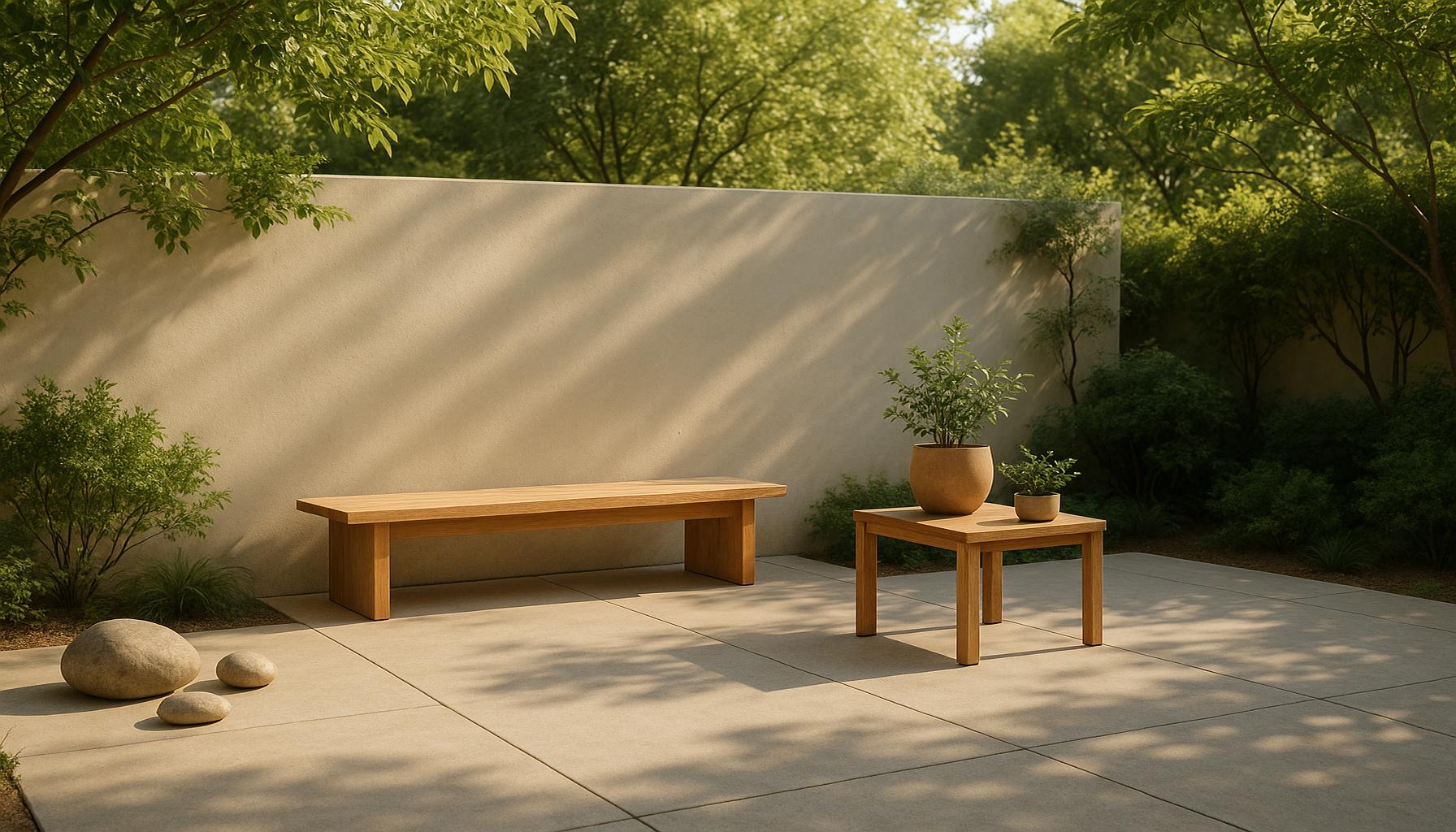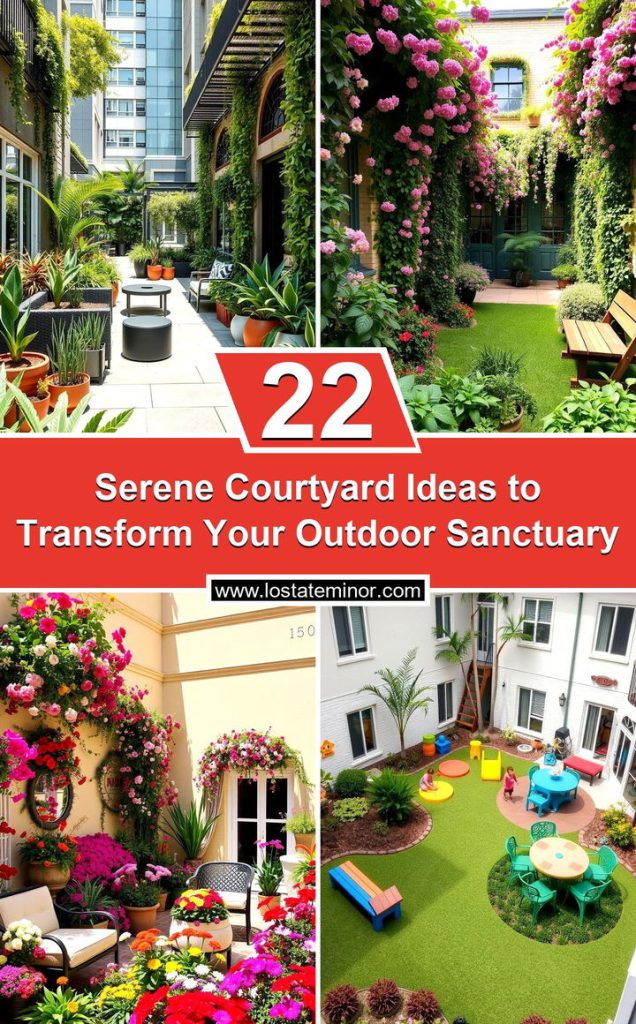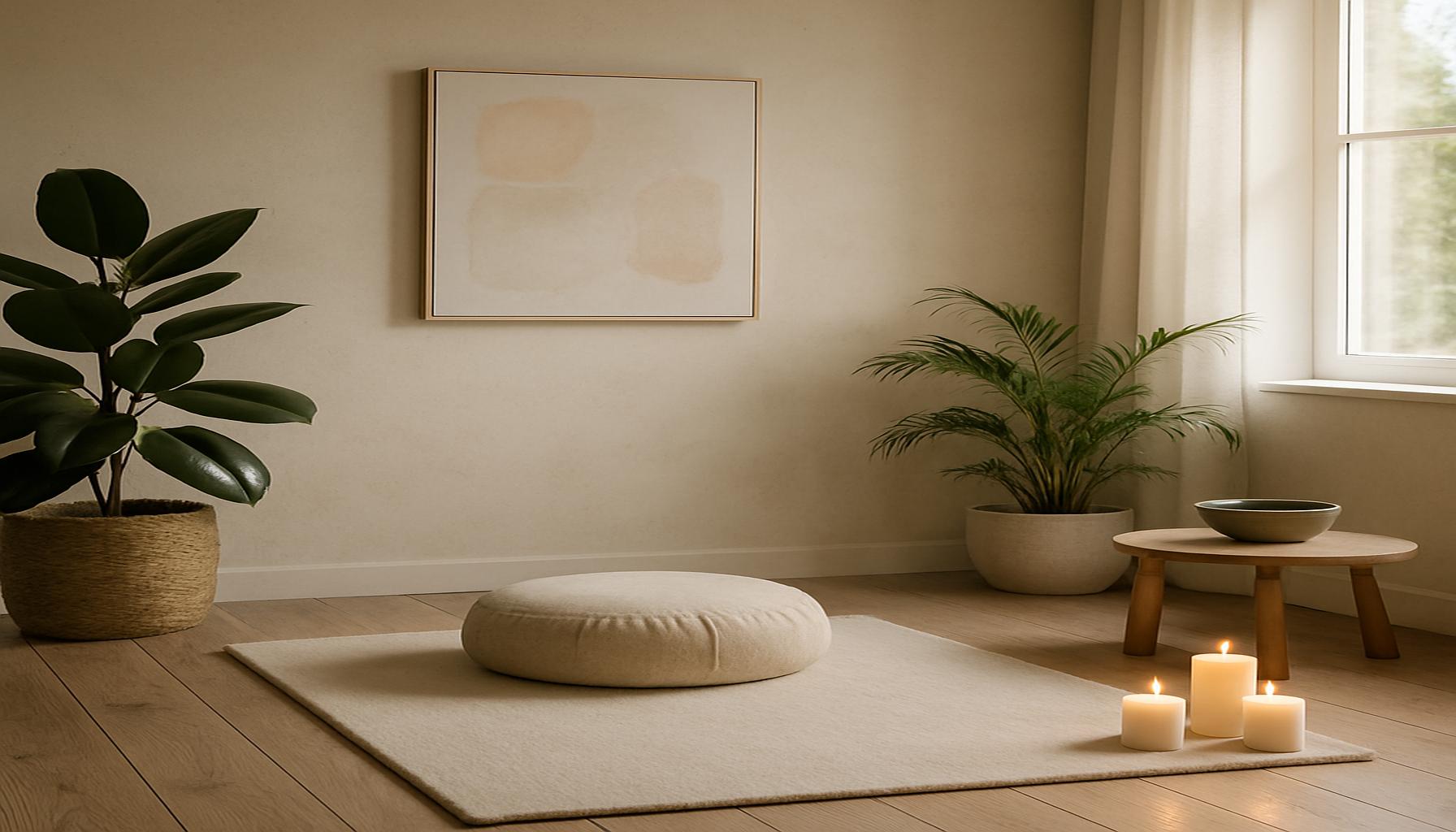Minimalism and the Art of Organizing Outdoor Spaces: Creating Sanctuaries of Tranquility

Discovering Peace in Nature
In a world filled with distractions, the desire to cultivate calm can lead us to our outdoor spaces. Embracing minimalism helps create serene environments that promote relaxation and clarity. By simplifying our outdoor areas, we can transform them into true sanctuaries that invite mindfulness and ease. The act of refining our surroundings not only enhances the aesthetic appeal but also fosters a sense of well-being, making every outdoor experience more meaningful.
Key Principles of Minimalism for Outdoor Spaces
- Decluttering: Begin by removing non-essential items that clutter your yard or garden. This could include broken furniture, excess decorations, or overgrown plants that no longer serve a purpose. A clean slate allows the beauty of nature to shine through, giving you a space that feels more open and welcoming.
- Functional Design: Choose outdoor furniture and plants that serve a dual purpose. For instance, consider seating that provides storage for cushions, or select native plants that require little maintenance while attracting beneficial wildlife. This approach not only simplifies your space but also ensures functionality and ease of upkeep.
- Natural Elements: Incorporate organic materials such as stone, wood, and metal to enhance the natural aesthetic of your outdoor area. Utilizing local materials not only makes the space feel more connected to the environment but also supports sustainable practices.
Outdoor spaces can reflect our inner needs, serving as places of retreat and reflection. When thoughtfully designed, these areas can become havens of peace amidst the chaos of modern life. Here are some popular features that encourage tranquility:
- Zen Gardens: These serene spaces utilize rocks, sand, and carefully placed plants to create a calming atmosphere. The minimalist approach encourages mindfulness, inviting individuals to engage in reflective raking or simple enjoyment of the aesthetic.
- Seating Areas: Selecting simple, comfortable furniture, such as benches made from reclaimed wood or minimalist lounge chairs, encourages relaxation. Strategically placing these seats in shaded or visually pleasing spots can enhance the serenity of your space.
- Water Features: Introducing elements such as fountains, birdbaths, or small ponds can create soothing auditory experiences. The gentle sound of flowing water not only masks unpleasant noise but also attracts wildlife, enriching the interaction with nature.
By making intentional design choices rooted in minimalism, anyone can harness the power of simplicity to rejuvenate their outdoor spaces. This exploration of tranquility encourages readers to rethink their connection with nature and the transformative potential of their surroundings. With every small change, you can create an environment that not only reflects your personal style but also nourishes your spirit, reminding you of the peace that nature can offer.
DISCOVER MORE: Click here to enhance your productivity
Simplifying Your Outdoor Environment
Embracing minimalism in outdoor spaces involves more than just decluttering; it is about cultivating an ecosystem that resonates with tranquility and simplicity. As you embark on this journey, consider how each item and design choice contributes to a greater sense of peace. A thoughtfully organized outdoor sanctuary can become a timeless retreat where you can escape the hustle and bustle of everyday life, allowing you to reconnect with nature.

Emphasizing Open Spaces
One of the foundational principles of minimalism is the concept of open space. When applying this idea to your outdoor areas, aim to create zones that breathe and invite movement. Instead of overcrowded paths and congested flower beds, opt for expansive areas where the eye can naturally wander. Here are some strategies to emphasize open space:
- Pathways: Designate clear and inviting pathways using natural gravel, stepping stones, or grass. These paths can guide you through your garden, encouraging exploration without the feeling of confinement.
- Spacing: Allow your plants room to grow by spacing them appropriately. This not only keeps your garden looking neat but also enhances air circulation, promoting healthier plant life.
- Groupings: Rather than planting numerous individual plants, create clusters of similar species. This approach not only makes for a more cohesive aesthetic but also reduces the visual clutter that detracts from the natural beauty around you.
Implementing these strategies can make your outdoor space feel more expansive, inviting you to enjoy it fully. Open spaces serve as a canvas, enabling you to appreciate the little details of nature’s beauty, whether it’s the gentle sway of grass in the breeze or the vibrant hues of blooming flowers.
Choosing a Color Palette
The colors incorporated into your outdoor sanctuary can significantly affect its atmosphere. Minimalist design advocates for a limited color palette that enhances rather than overwhelms. Consider selecting a few complementary colors that blend harmoniously with your environmental context. Earthy tones and muted shades can create a calming ambiance that draws you to the natural elements present.
When selecting plants, focus on varieties that align with this color scheme. Native plants not only thrive in local conditions but also contribute to biodiversity, attracting local pollinators such as bees and butterflies. Additionally, incorporate elements like decorative stones or potted plants in similar tones to unify the space.
Incorporating Purposeful Elements
Minimalism encourages intentionality in every aspect of design, urging you to select features that serve a purpose. Consider the following features that embody this philosophy:
- Garden Benches: Opt for simple benches that provide resting spots, helping you reconnect with your surroundings. Look for benches made from durable, natural materials that blend seamlessly with the landscape.
- Portable Fire Pits: Introduce a fire pit that can serve as a gathering space during cooler evenings while providing warmth and ambiance. A minimalist design can focus on functionality while still presenting an aesthetically pleasing focal point.
- Vertical Gardens: If space is limited, consider creating a vertical garden. This technique allows you to grow various plants while maximizing your space, promoting both beauty and sustainability.
By understanding and implementing these minimalism techniques in your outdoor spaces, you will be on the path to creating personal sanctuaries that promote relaxation and mindfulness. Each carefully selected element enhances the overall essence of your environment, leading to a deeper connection with nature and a greater appreciation of the tranquil moments it offers.
| Category | Description |
|---|---|
| Aesthetic Appeal | Minimalism enhances the beauty of outdoor spaces by focusing on clean lines and simplicity. |
| Enhanced Serenity | An organized outdoor space fosters tranquility, allowing one to escape the chaos of daily life. |
| Sustainable Practices | Minimalist gardens often utilize native plants, promoting biodiversity and reducing maintenance. |
| Efficient Use of Space | Organizing outdoor spaces maximizes functional areas, leading to better use of less space. |
The modern practice of minimalism in outdoor spaces not only changes aesthetics but radically transforms the relationship between individuals and their environment. By stripping away clutter, each element transitions from mere decoration to a purposeful aspect of wellness and calm. The state of tranquility fostered by these serene habitats becomes essential in combating the stressors of contemporary life. Additionally, the focus on sustainability not only aids wildlife but builds a strong connection between nature and human habitation. Thus, diving deeper into minimalism and organization offers a path to not only beautifying but healing oneself through nature. The potential for reflection, growth, and connection is merely waiting for exploration.
DISCOVER MORE: Click here to uncover the impact of minimalism on your happiness</p
Curating Natural Features and Sustainable Practices
Incorporating nature into your outdoor sanctuary is key to achieving a minimalist aesthetic that feels organic and harmonious. Instead of overwhelming your space with numerous man-made items, focus on accentuating the natural beauty present in your surroundings. This approach not only aligns with minimalist ideals but also fosters a deeper connection with the environment. Here are some ways to effectively curate natural features in your outdoor spaces:
Highlighting Native Flora
Utilizing native plants in your garden is a powerful step toward creating a low-maintenance and environmentally friendly sanctuary. Native plants are well-adapted to the local climate and soil conditions, meaning they require less water, fertilizer, and pesticides. By choosing species that thrive in your region, you can establish a garden that is not only sustainable but also teeming with color and wildlife. For example, if you’re in the Midwest, consider planting cone flowers and black-eyed Susans that attract pollinators while adding vibrance to your landscape.
Creating Natural Focal Points
Every minimalist garden should have a few key elements that draw the eye without cluttering the landscape. Consider incorporating natural features such as boulders, water features, or mature trees that can serve as focal points. These elements can create a sense of perspective and help define different areas in your outdoor space. A strategically placed stone grouping or a small pond can evoke tranquility without overwhelming the senses. Remember, the goal is to enhance the space’s natural beauty, not to distract from it.
Practicing Sustainable Design
Minimalism and sustainability often go hand in hand. The principles of minimalism advocate for simplicity and efficiency, which can translate into environmentally friendly practices. To integrate sustainability into your outdoor sanctuary, consider the following:
- Rain Gardens: Create a rain garden to help manage stormwater runoff while providing a habitat for wildlife. By using native plants that thrive in wet conditions, you can create a beautiful space that serves an important ecological function.
- Compost Systems: Establish a compost system to recycle organic waste into nutrient-rich soil. This not only reduces waste but also enriches your garden, promoting healthier plant growth.
- Low-Impact Furniture: Invest in outdoor furniture made from sustainable materials such as reclaimed wood or recycled aluminum. This choice will not only reduce environmental impact but also add to the aesthetic appeal of your minimalist space.
By embracing these sustainable practices and focusing on the natural features of your outdoor environment, you can create a sanctuary that aligns with minimalist principles and respects the local ecosystem. The reward is a serene outdoor space that not only looks beautiful but also nurtures both yourself and the environment.
Incorporating Meditation and Mindfulness Areas
Finding tranquility involves spaces designed for reflection and mindfulness. Creating dedicated areas for meditation or quiet contemplation in your outdoor sanctuary can foster a deep sense of peace. Here are some ideas:
- Zen Gardens: A minimalist Zen garden with carefully arranged stones, sand, and a few select plants encourages meditation and reflection. Allow the simplicity of this design to invite peaceful moments and a clearer mind.
- Quiet Nooks: Use natural features, such as trees or shrubs, to create cozy nooks for sitting and unwinding. Furnish these spots with simple cushions or blankets that encourage long, restful stays.
- Sensory Experiences: Incorporate elements that engage the senses, such as fragrant herbs or a small water fountain. These features can create a multi-sensory experience that further enhances relaxation and mindfulness.
Through careful consideration of both purposeful design and natural features, your outdoor spaces can evolve into tranquil sanctuaries that reflect the essence of minimalism while nurturing a connection with the world around you. Each step taken towards simplifying your environment helps to cultivate a deeper sense of peace that resonates with both you and nature.
DIVE DEEPER: Click here to discover the freedom of minimalism
Embracing Serenity through Minimalism
In conclusion, creating outdoor spaces that reflect the principles of minimalism leads to more than just aesthetic beauty; it paves the way for deeper experiences of tranquility and connection with nature. By focusing on native plants, sustainable designs, and well-curated natural features, you not only simplify your outdoor environment but also promote eco-friendly practices that benefit local ecosystems.
The integration of mindfulness areas further enhances these sanctuaries, encouraging moments of reflection and stillness amid the chaos of daily life. Whether through the simplicity of a Zen garden or the comfort of a quiet nook enveloped by nature, each thoughtfully designed element contributes to a sense of peace and relaxation.
Ultimately, the art of organizing outdoor spaces is about finding balance and embracing the serenity that comes from a less cluttered environment. As you embark on this journey, consider how minimalism can transform not only your physical space but also your mental well-being. A tranquil outdoor sanctuary awaits those willing to embrace simplicity—an invitation to slow down, reflect, and appreciate the natural beauty around us.
As you create your own outdoor oasis, remember that every choice made contributes to a harmonious relationship with your surroundings. You are not just shaping an environment; you are crafting a personal retreat, a sanctuary where both nature and self can thrive in harmony.


